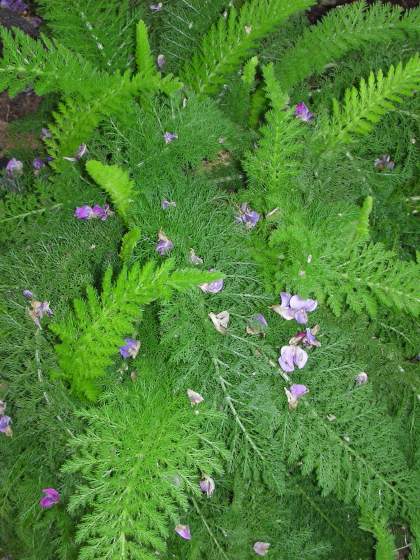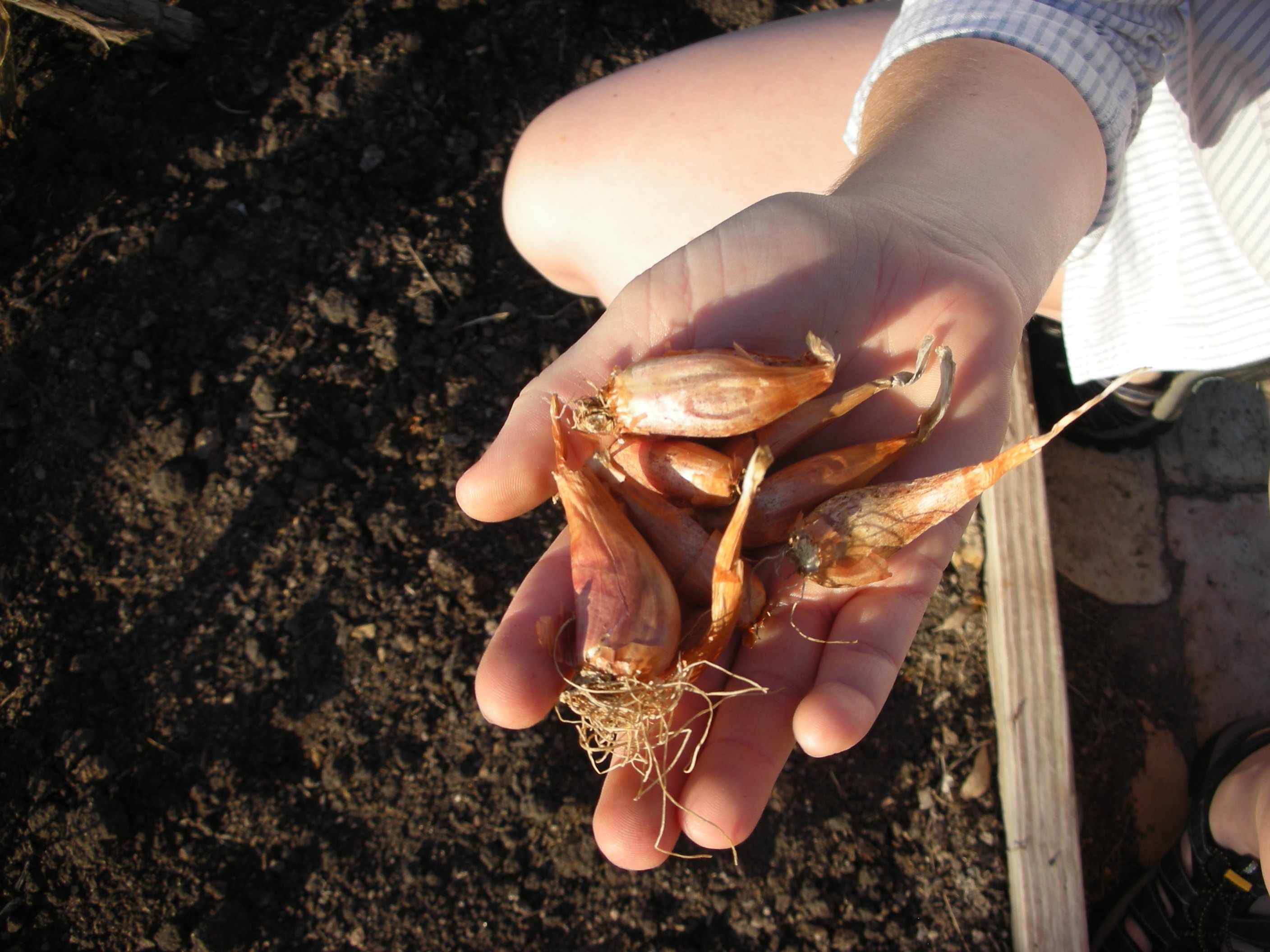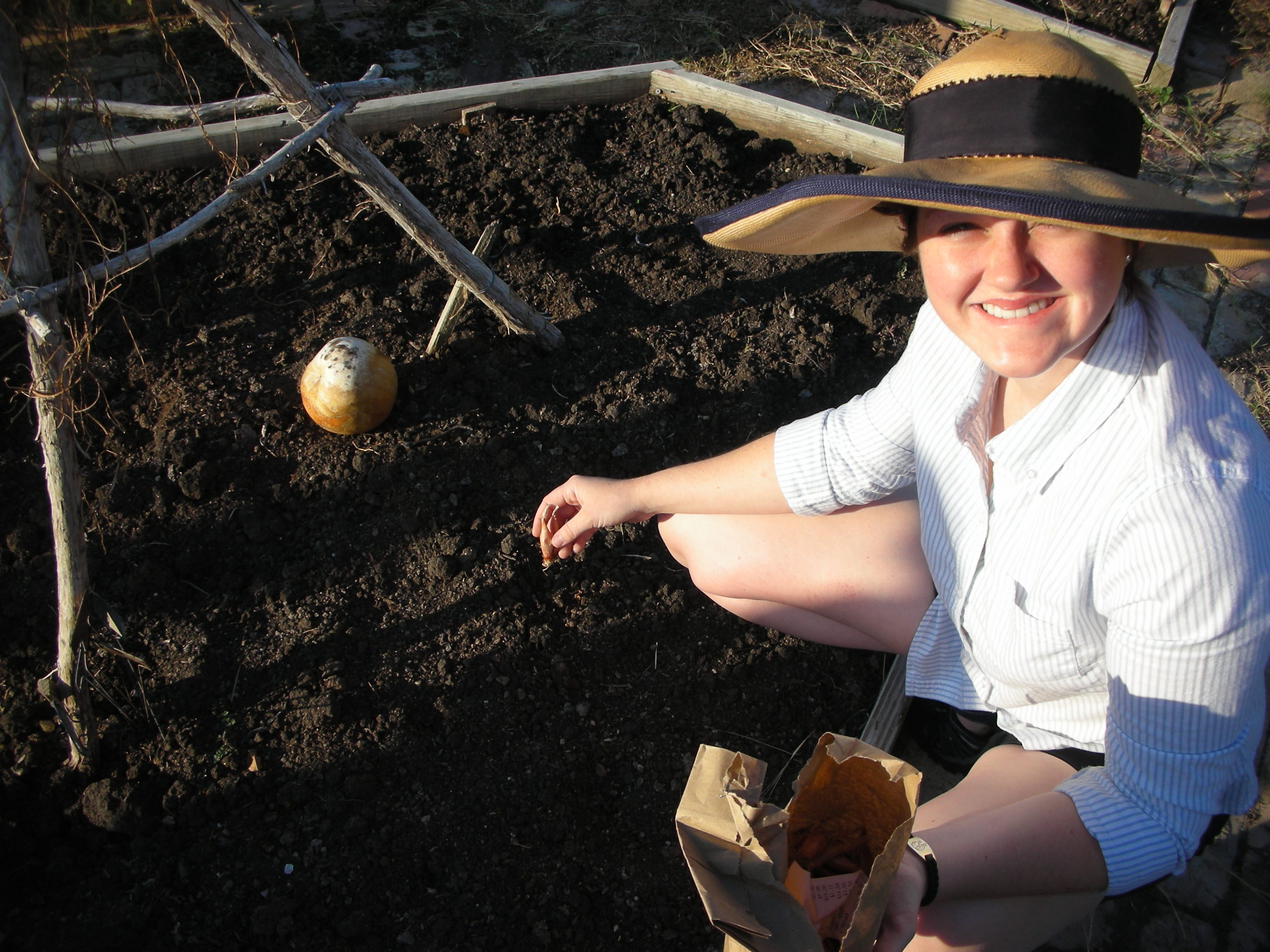Lately, several people have been visiting my site from Pininterest.com and “pinning” shots of my garden on their pinboards. I am very flattered when this happens. If you are not yet familiar with Pintrest you should check it out. It is a collaborative site where you create “pin boards” of your favorite topics and then post images that you find on the web in them. Then, everyone on the internet can come to your site and see the things that you have found. It is really cool and you can quickly burn several hours if you are not careful.
 Right now, my little garden has never been prettier. The folks from the Central Texas Gardener television program came to film it back in December. It was pretty then, but it is a lot prettier now. The veggies are doing great, but the flowers have really matured and look beautiful. Eventhough the potager is mostly about the vegetables, it is the flowers that make it interesting. So, for all of you Pinterest users that are fans of small, raised bed kitchen gardens, and my regular readers, here are a few pics of what is currently blooming in my little potager.
Right now, my little garden has never been prettier. The folks from the Central Texas Gardener television program came to film it back in December. It was pretty then, but it is a lot prettier now. The veggies are doing great, but the flowers have really matured and look beautiful. Eventhough the potager is mostly about the vegetables, it is the flowers that make it interesting. So, for all of you Pinterest users that are fans of small, raised bed kitchen gardens, and my regular readers, here are a few pics of what is currently blooming in my little potager.
 Panseys are always a great choice for Texans in the fall. I planted these around the first of Decemeber. If you look closely you will notice carrot foliage in the back. I do companion plantings in all of my beds. I have a mix of pink and purple panseys that share the center bed with a mix of carrots and vilolas (Johnny Jump Ups). They are all thriving and look very good mixed together.
Panseys are always a great choice for Texans in the fall. I planted these around the first of Decemeber. If you look closely you will notice carrot foliage in the back. I do companion plantings in all of my beds. I have a mix of pink and purple panseys that share the center bed with a mix of carrots and vilolas (Johnny Jump Ups). They are all thriving and look very good mixed together.
 Violas are one of my favorite winter flowers. The work great in pots where their pretty little flowers grow rapidly and spill over the side.
Violas are one of my favorite winter flowers. The work great in pots where their pretty little flowers grow rapidly and spill over the side.
 Calendula is often called pot marigolds. Not only is it pretty and a prolific bloomer, the petals are edible.
Calendula is often called pot marigolds. Not only is it pretty and a prolific bloomer, the petals are edible.
 I love dianthus. They bloom well into the summer. Their common name is “pinks”. People think this is because they are mostly pink, but it is really because their petals look like they were cut with pinking shears. They come in all colors and all sizes now but I still prefer this old fashioned variety.
I love dianthus. They bloom well into the summer. Their common name is “pinks”. People think this is because they are mostly pink, but it is really because their petals look like they were cut with pinking shears. They come in all colors and all sizes now but I still prefer this old fashioned variety.
 This year’s winner in the vegetable department is Comet Broccoli. This variety is incredible at putting on side shoots. I have two dozen of these scattered throughout the potager. Last Sunday, my wife and I harvested 8 produce bags full of side shoots.
This year’s winner in the vegetable department is Comet Broccoli. This variety is incredible at putting on side shoots. I have two dozen of these scattered throughout the potager. Last Sunday, my wife and I harvested 8 produce bags full of side shoots.
 Here is a picture of me with a lettuce harvest. Our lettuce has been outstanding this year.
Here is a picture of me with a lettuce harvest. Our lettuce has been outstanding this year.
 One of my favorite things in the potager is not a plant at all. It is our bottle tree. While not technically in the potager (it is in the outside border), I still think of it as one of the main things that adds interest and charm to my little garden.
One of my favorite things in the potager is not a plant at all. It is our bottle tree. While not technically in the potager (it is in the outside border), I still think of it as one of the main things that adds interest and charm to my little garden.
 In addition to the flowers pictured above, I have byzantine gladiolous, crinums, daylilies, two varities of roses, lots of salvia, red poppies, holley hocks, crysanthimums, zinnias and larkspur. This ever changing pallette of colors and textures is what keeps me excited and watchful throughout the year.
In addition to the flowers pictured above, I have byzantine gladiolous, crinums, daylilies, two varities of roses, lots of salvia, red poppies, holley hocks, crysanthimums, zinnias and larkspur. This ever changing pallette of colors and textures is what keeps me excited and watchful throughout the year.












































